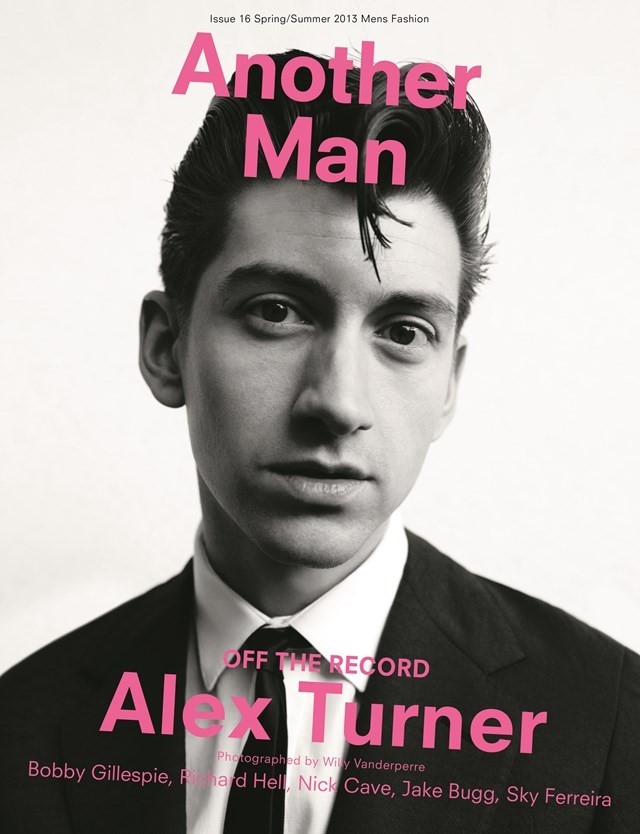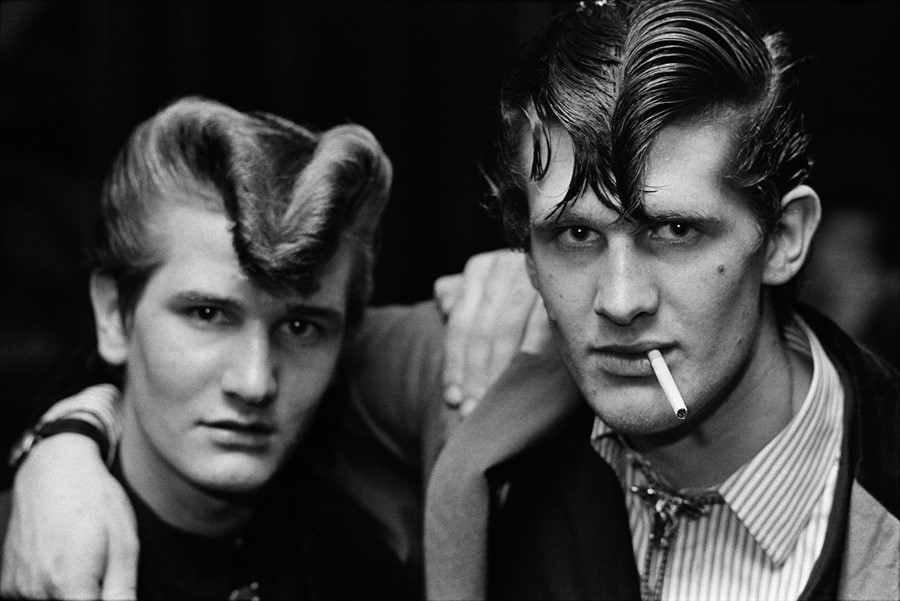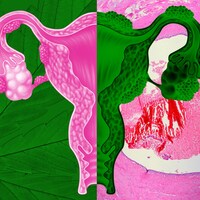Characterised by its towering height, it melded the flamboyance of Edwardian fashion with the very 20th-century styling tool of Brylcreem
“Once more, crime and the clasp-knife have brought the teddy boy before the public eye in the worst light,” wrote journalist Hugh Latimer in a 1955 article from The Observer, in an unusually even-handed assessment of the youth phenomenon overtaking Britain’s streets at a seemingly unstoppable pace. “Hooligan he may be, but criminal rarely,” continued Latimer, arguing that the teddies were not just violent gang members, but instead the pioneers of a bold new moment in the history of style.
Whether this did anything to quell the fears of the pearl-clutching bourgeoisie, who saw the teddies’ slick suits and drainpipes as nothing more than a sartorial expression of criminality, is debatable. What it did do, however, is shine a light on the first youth-led subculture of its kind. Without the teddy boys, we wouldn’t have had hippies or punks, ravers or new romantics. And we certainly wouldn’t have had the hairstyle with which the movement is now inextricably associated: the gravity-defying, slicked quiff nicknamed the ‘DA’; or, less politely, the ‘duck’s arse’.
To understand the birth of the teddy boy look - and the legacy of its signature hairstyle - it helps to look back at the historical moment from which it came. In the aftermath of World War II, London was still suffering under fiscal austerity and high unemployment following six years of brutal conflict. At the lowest point of the economic depression, the tailors of Savile Row began proposing a return to the most recent period of British glory - the Edwardian era, from which the teddies take their name - by reconfiguring its long, lapelled jackets, jazzy waistcoats and tightly-fitted trousers for a new audience.
Initially an upper-class phenomenon, slowly the knockabouts of East and South London began imitating the style, much to the horror of its pioneers. Then, with the 1955 release of Bill Haley & His Comets’s Rock Around The Clock, American rock’n’roll hit Britain like a lightning bolt. The new Edwardian ‘spivs’ and ‘cosh boys’ had found their battle cry. Within months, a new hybrid of American western style and classic Edwardian tailoring had been born, serving as the exclusive uniform for the young miscreants hitting Deptford or Brixton for a night out dancing - along with the odd eruption of violence to incite a little “the kids are not alright” panic in the daily papers.

From the very beginning, the hairstyle came part and parcel with this controversial new look. Characterised by its towering height, it melded the flamboyance of Edwardian fashion with the very 20th-century styling tool of Brylcreem. It took liberal amounts of the stuff, after all, to maintain its impressively complex engineering; requiring its wearer to grow out their fringe to at least a few inches in length, while then trimming the sides and back short. It marked the first step away from the military-style, short and neatly parted haircuts that had been - up to that point - the only respectable look for men, and paved the way for The Beatles to send shockwaves through polite society with their mop tops in the 1960s.
And it was partly thanks to The Beatles and the concurrent advent of Mod style that the teddy boy fashion would swiftly fade - even though it never died altogether. There was a notable revival in the 1970s during the rockabilly craze, and the teddy boy has served as a continuing reference point for those wanting to channel a little of the original’s seismic shock value. Take Alex Turner’s 2013 cover for AnOther Man, photographed by Willy Vanderperre and styled by Alister Mackie, where the Arctic Monkeys frontman sports a meticulously crafted, greased-back pompadour quiff with more than a hint of the ‘DA’; or Rei Kawakubo’s SS15 collection for Comme des Garçons Homme Plus, where models wore stylised versions of the do. Wherever boundary-breaking fashion goes, the ‘duck’s arse’ follows (so to speak).
After all, despite its extraordinary legacy, the humble haircut was more than just a style statement. It marked the birth of that greatest of cultural phenomena that would transform the course of 20th-century pop culture: the teenager. Where generations of youth past had relied upon their parents for what to wear and what to listen to, the post-WWII baby boom produced a new guard who was fiercely independent in both style and cultural tastes, with the jangling strains of American rock’n’roll as their soundtrack. There’s nothing that fashion loves more than a tip of the hat to countercultural history, and the teddy boys were patient zero.
The irony - as with many other youth movements - is that the spirit of reckless freedom designers and stylists today hope to recreate was actually the product of the strictest adherence to sartorial rules and regulations: that the drainpipes must be black, or their trademark beetle-crusher shoes had to have a one-inch platform. The exacting process behind constructing the teddy boy hairstyle required a regimen that perhaps lost its allure once the flowing, maintenance-free locks of the hippies or the shaved scalps of the skinheads came along as an alternative.
By the 1970s, Britain had spawned so many youth movements that a culture of tribalism saw increasing conflict between the rival factions - the first generation of teddies vs. the mods vs. the rockabillies, or all three of them pitted against their greatest enemy, the punks - following which the culture seemed to fizzle out before it was almost extinguished altogether. As Britain undergoes another similar period of austerity and youth malcontent, could the teddy boy look be overdue a revival? Perhaps it’s time to give the unfairly maligned ‘duck’s arse’ a try. Just don’t forget the Brylcreem.




